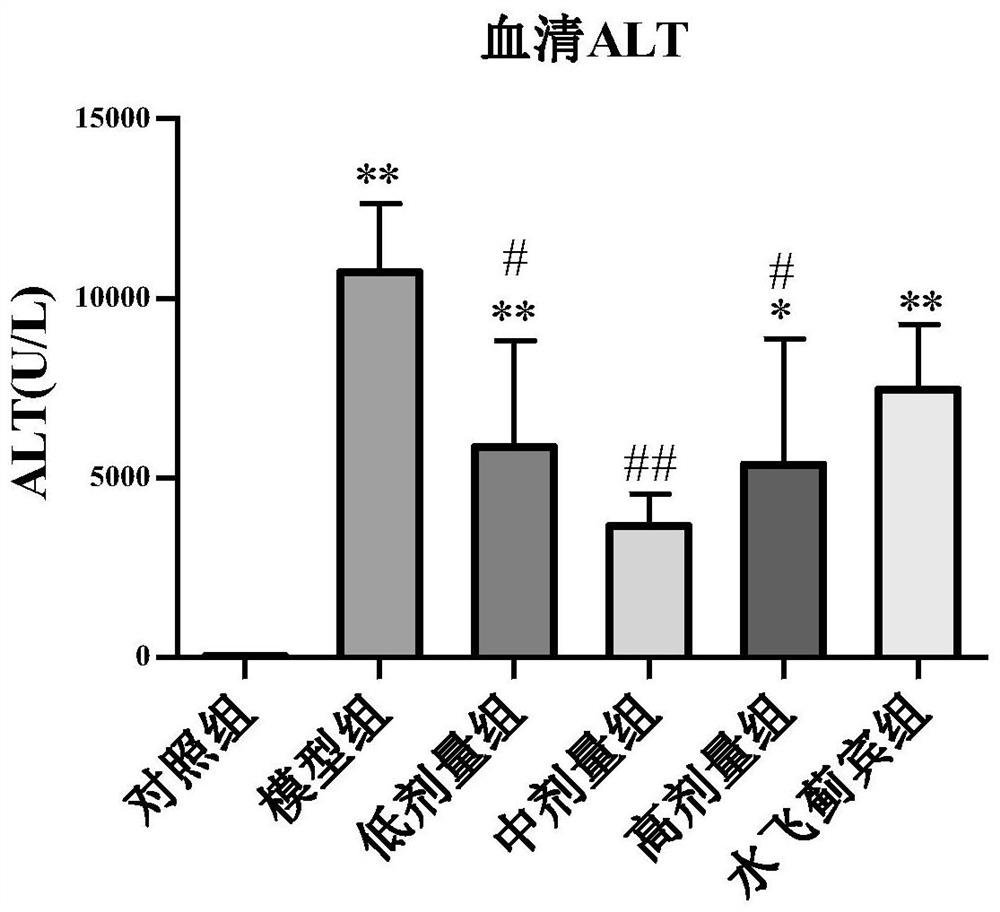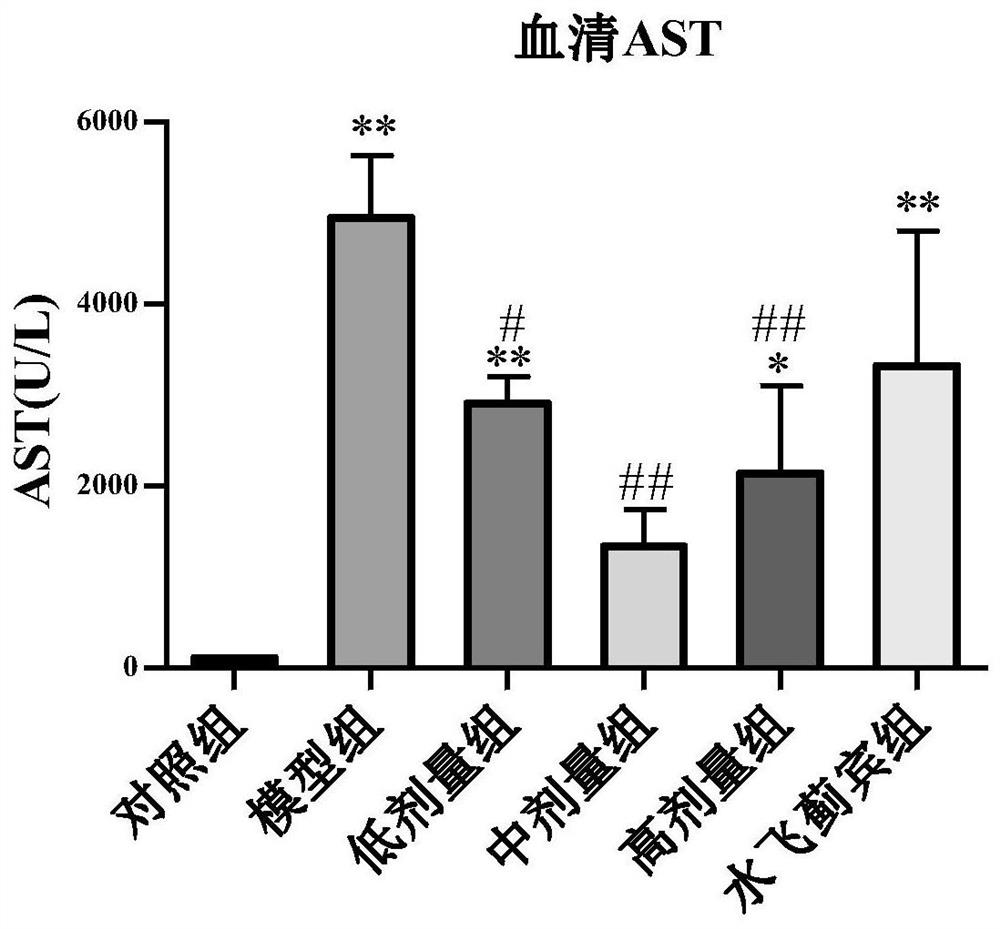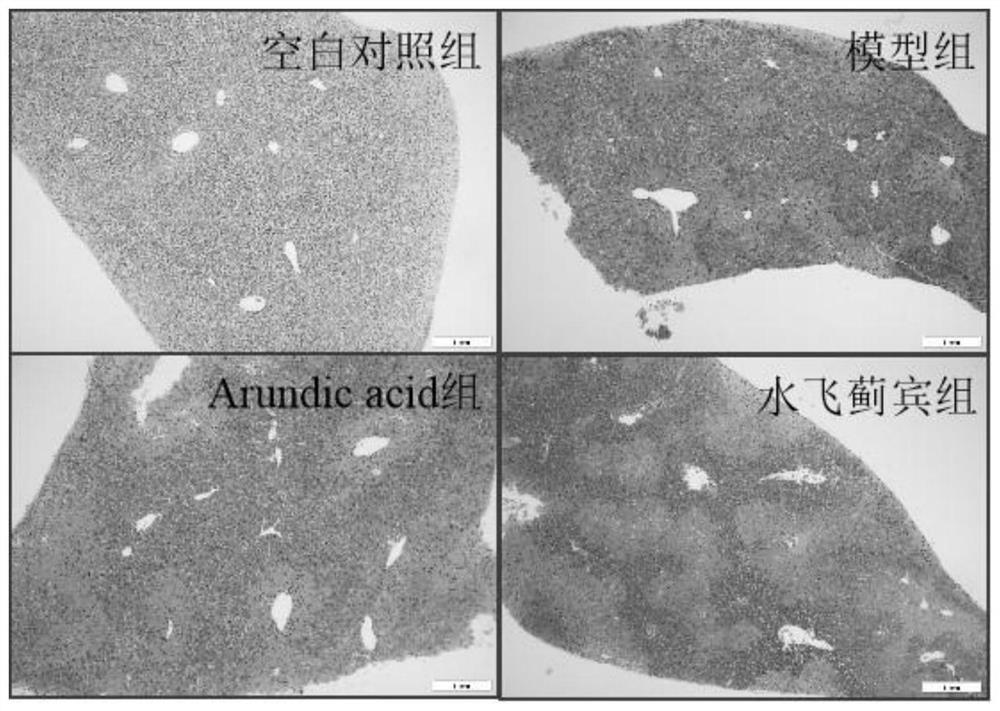Application of arundic acid in preparation of medicine for treating hepatic fibrosis
A technology of liver fibrosis and alenic acid, which is applied in the field of alenic acid for the treatment of liver fibrosis, can solve the problems of lack of drugs for liver fibrosis, and no liver fibrosis has been seen yet.
- Summary
- Abstract
- Description
- Claims
- Application Information
AI Technical Summary
Problems solved by technology
Method used
Image
Examples
Embodiment 1
[0031] Example 1: Effect of Alenic Acid on Carbon Tetrachloride-Induced Acute Liver Injury in Mice, and Comparison with the Positive Drug, Silibinin
[0032] 1. Materials and methods
[0033] 56 male C57BL / 6 mice (Victorian Lihua), the weight of the mice at the beginning of the experiment was 24 + 1g. Adaptive rearing for one week under the culture conditions of temperature 24-26°C, humidity 60%, light and dark for 12 hours each. Mix CCl with a volume ratio of 1:3 4 and olive oil, except for the control group, each male C57BL / 6 mouse was intraperitoneally injected with 0.05mL / 10g (body weight) CCl 4 olive oil solution, and the control group was intraperitoneally injected with an equal volume of olive oil. 24 hours after model establishment, alenic acid and silibinin were administered according to the following groups. After 48 hours, mice were sacrificed and samples were taken. Serum was collected from the mice, and the livers were cryopreserved and fixed with 4% paraforma...
Embodiment 2
[0047] Example 2: Effect of alenic acid on carbon tetrachloride-induced chronic liver fibrosis model in mice, and comparison with the positive drug silibinin
[0048] 1. Materials and methods
[0049] 56 male C57BL / 6 mice (Victorian Lihua), the weight of the mice at the beginning of the experiment was 20 + 1g. Adaptive rearing for one week under the culture conditions of temperature 24-26°C, humidity 60%, light and dark for 12 hours each. Mix CCl with a volume ratio of 2:5 4 and olive oil, except for the control group, each male C57BL / 6 mouse was intraperitoneally injected with 0.02ml / 10g (body weight) CCl every three days 4 olive oil solution, and the control group was intraperitoneally injected with the same volume of olive oil, and the model continued for 6 weeks. The test drug was administered 2 weeks after modeling, continued for 4 weeks (28 days), and ended after 6 weeks.
[0050] 2. Administration method
[0051] With embodiment 1.
[0052] 3. Group design
[00...
PUM
 Login to View More
Login to View More Abstract
Description
Claims
Application Information
 Login to View More
Login to View More - R&D
- Intellectual Property
- Life Sciences
- Materials
- Tech Scout
- Unparalleled Data Quality
- Higher Quality Content
- 60% Fewer Hallucinations
Browse by: Latest US Patents, China's latest patents, Technical Efficacy Thesaurus, Application Domain, Technology Topic, Popular Technical Reports.
© 2025 PatSnap. All rights reserved.Legal|Privacy policy|Modern Slavery Act Transparency Statement|Sitemap|About US| Contact US: help@patsnap.com



